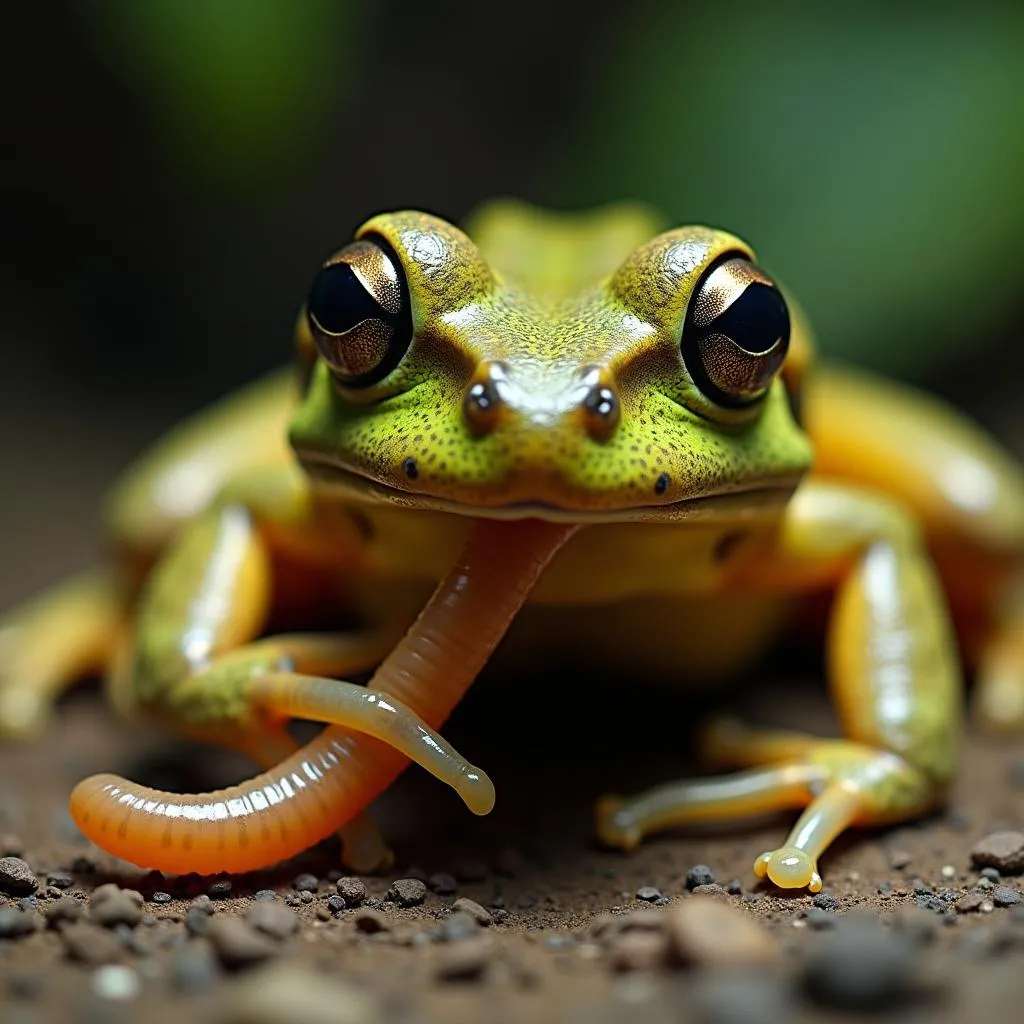The Fascinating World of African Dwarf Frog Eggs
African dwarf frogs are becoming increasingly popular pets due to their small size, peaceful nature, and relatively easy care requirements. While these fascinating creatures add a unique touch to any home, those interested in breeding them often find themselves intrigued by the captivating world of African Dwarf Frog Eggs. This article will delve into the intricacies of these amphibian eggs, providing valuable insights for both novice and experienced frog enthusiasts.
Identifying African Dwarf Frog Eggs: What to Look For
Spotting African dwarf frog eggs can be tricky due to their small size and translucent appearance. These tiny, jelly-like spheres are often found attached to each other in clusters, clinging to plants, tank decorations, or even the water’s surface. Identifying them requires a keen eye and some knowledge of what to look for.
Freshly laid eggs appear clear to slightly white, with a tiny black dot visible inside each one. This dot signifies the developing embryo and is a crucial indicator of fertile eggs. As the embryos develop, the black dot will grow larger, eventually taking up most of the egg’s space.
Creating the Ideal Breeding Environment
Successfully breeding African dwarf frogs hinges on replicating their natural breeding conditions. This involves creating a suitable environment within their tank to encourage mating and egg-laying. Several factors play a crucial role in stimulating breeding behavior.
Water Parameters: The Key to Success
Maintaining optimal water parameters is paramount. African dwarf frogs thrive in warm water temperatures ranging from 78°F to 82°F (25°C to 28°C). The water should be slightly acidic to neutral, with a pH level between 6.5 and 7.5. Regular water changes are crucial to ensure water quality remains high.
Diet and Nutrition: Fueling the Breeding Process
A balanced and nutritious diet is essential for healthy breeding. Feed your frogs a variety of high-quality foods, including live or frozen bloodworms, brine shrimp, and daphnia. Increasing the frequency of feeding and offering protein-rich treats can also encourage breeding.
Simulating Rainfall: Triggering Natural Instincts
In the wild, African dwarf frogs breed after periods of heavy rainfall. You can mimic this in captivity by performing a “rainfall simulation.” This involves gradually lowering the water level in the tank and then slowly refilling it with slightly cooler water. This change in water parameters can trigger breeding behavior.
Caring for African Dwarf Frog Eggs and Tadpoles
Once your frogs have laid eggs, proper care is crucial to ensure the survival of the tadpoles. The first step is to carefully separate the eggs from the adult frogs to prevent them from being eaten.
Setting Up a Hatchery Tank
A separate hatchery tank is ideal for raising the tadpoles. This tank should be filled with dechlorinated water and equipped with a gentle sponge filter to provide oxygenation without creating strong currents. The water temperature should be maintained within the same range as the breeding tank.
Feeding and Caring for Tadpoles
African dwarf frog tadpoles are herbivores and require a diet rich in algae and plant matter. You can purchase commercial tadpole food or cultivate your own algae in a separate container. As the tadpoles grow larger, you can gradually introduce them to finely crushed flake food.
Frequently Asked Questions (FAQ)
Q: How long does it take for African dwarf frog eggs to hatch?
A: African dwarf frog eggs typically hatch within 3 to 5 days, depending on the water temperature.
Q: How many eggs do African dwarf frogs lay at once?
A: Female African dwarf frogs can lay hundreds of eggs at a time, although not all of them may be fertile.
Q: Can I keep African dwarf frog tadpoles with the adult frogs?
A: It is not recommended to keep tadpoles with adult frogs as they may be mistaken for food and eaten.
Q: What do I do with the tadpoles once they develop into froglets?
A: Once the tadpoles develop into froglets, you can gradually introduce them to the adult frog tank or set up a separate tank for them.
Q: My African dwarf frogs haven’t laid any eggs. What could be wrong?
A: Several factors can affect breeding, including water parameters, diet, stress levels, and the overall health of the frogs. Ensure their environment is optimal and consult a veterinarian if you suspect any underlying health issues.
Need More Information?
For further guidance on African dwarf frog care, breeding, or any other inquiries, feel free to explore other relevant articles on our website.
For personalized assistance, contact us at:
Phone: +255768904061
Email: [email protected]
Address: Mbarali DC Mawindi, Kangaga, Tanzania
Our dedicated customer support team is available 24/7 to assist you with any questions or concerns you may have.

